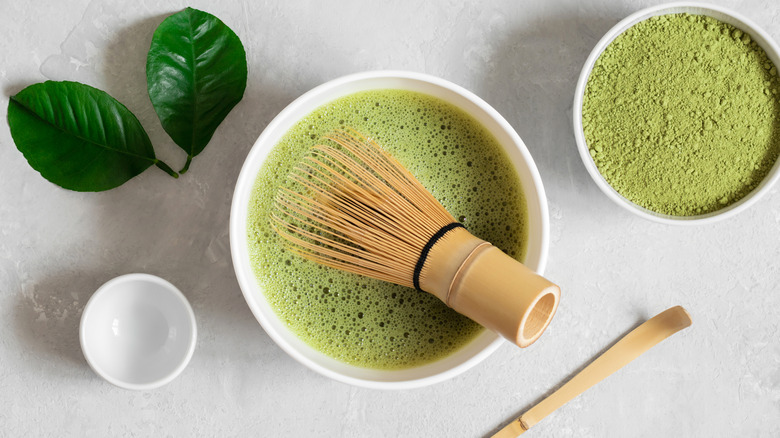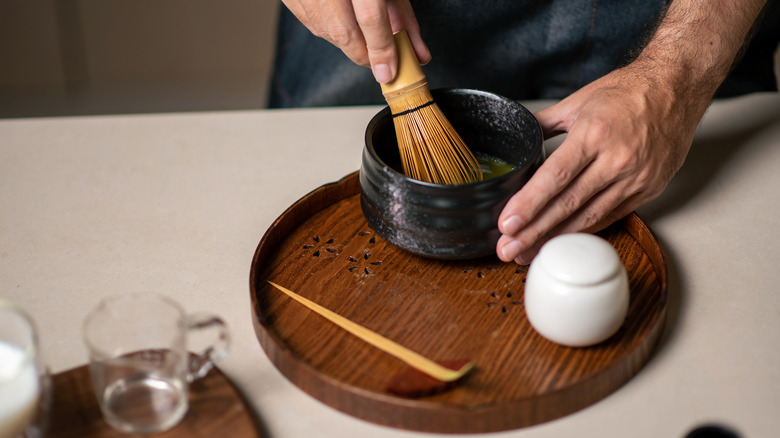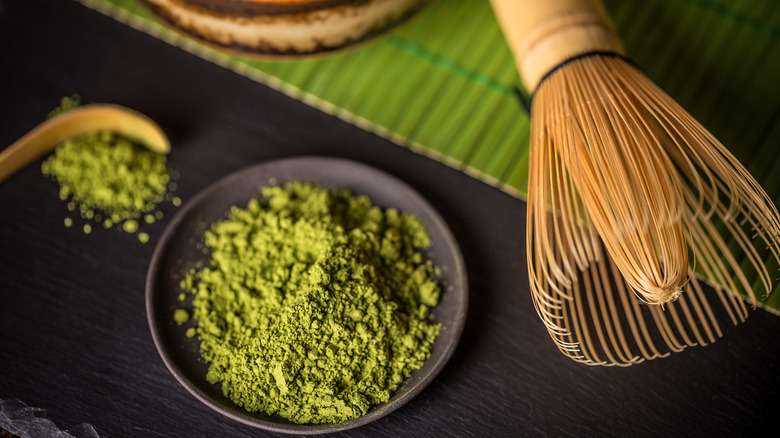How To Properly Clean Your Matcha Whisk After Use
Despite some commentary that matcha tastes too much like grass to be delightful, matcha tea has been on the rise in popularity in the United States for quite some time. The tea certainly has a unique flavor and is brimming with high amounts of caffeine and antioxidants, which add to its health benefits. The matcha phenomenon has spread from coffee shops to at-home matcha connoisseurs, and if you're part of the latter group, you should know that using a bamboo whisk is the best way to make your matcha.
Also known as a chasen, a matcha bamboo whisk is more effective than a regular baking whisk. Bamboo whisks have more prongs than a baking whisk, which means more opportunity to separate the matcha powder and prevent clumps in your tea. Matcha is a finely ground powder made of green tea leaves. Mixing the hot water and matcha powder with a bamboo whisk will make your matcha frothy, where a baking whisk will do no more than scratch your bowl.
But if you're going to use a bamboo whisk, it is important to know how to care for it. Bamboo can be delicate, so cleaning your matcha whisk is essential to ensuring its longevity.
Techniques for cleaning your chasen
Caring for your matcha whisk begins as soon as you get it. You should soak the brand-new chasen in hot water for approximately two minutes prior to the first use. This technique loosens the bamboo prongs so they are not stiff while you whisk. Since bamboo can break quite easily, lessening its stiffness aids in flexibility, preventing breakage. In fact, bamboo is 20% stronger when it is wet, so this cleaning method will help keep your whisk in good shape.
Utilizing the soaking method before each use of your whisk (not just before the first use) will help keep the bristles soft time after time again. This is also the same method you should use to clean your whisk after each use — soap should never be used on a chasen, and it should not be put in the dishwasher.
To dry, placing the chasen on a whisk holder helps keep the prongs separate while they dry and helps it keep its shape over time. If you don't have a whisk holder, that's okay. You should dry the whisk right after washing it, and let it air dry with the handle pointing up — if the whisk is upright, excess water could drip into the whisk's handle and create mold over time. An alternative cleaning method is to soak the whisk in vinegar for just a few seconds, then pat it dry gently before letting it air dry. This method will avoid excess dampness.
Why cleaning your matcha whisk matters
A big element of a delicious-tasting matcha is the whisk used to mix it. If the whisk is broken or too stiff, it won't be able to properly separate the clumps of matcha, and your matcha will not be as smooth and ready to drink. This is why cleaning your chasen properly is so important. Since bamboo is a natural material, it can wear down quicker than a metal baking whisk would; regular maintenance is required to make sure you don't have to replace your whisk too often.
Using the soaking method mentioned above to clean your bamboo whisk will help remove residue and prevent mold from building on the bristles. Mold could lead to breakage and frayed prongs, and is generally unsanitary, so cleaning your chasen consistently and properly can ensure that it lasts a long time — you may not even need to replace it for a year or two.


